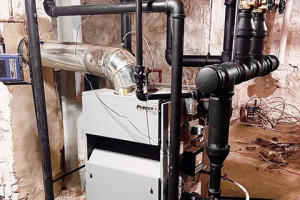
Hello, old friend. I’m writing today to say thanks, and to say farewell. This will be my last column.

Five years ago, I had cataract surgery. I had no idea that I needed cataract surgery because I thought what I was seeing was normal. But then one day I drove into the tunnel that goes under Baltimore Harbor and everything got dark. Scary dark.
I saw my doctor and got the news a few days later. He told me that cataracts sneak up on you over many years and that’s why I thought that what I was seeing was normal. It wasn’t.
They do one eye at a time with several weeks in between, which is a good thing because it takes your brain that long to get used to what’s going on. I felt like Dorothy when she opened the door and saw Munchkinland.
My left eye was now seeing color that was so vibrant it almost hurt. And when I closed that eye, and looked at the world through my right eye, it was all sepia. I spent two weeks opening and closing one eye after another and looking at the world with wonder. I could see clearly now.
My doctor explained how humans accept the abnormal as normal because, well, that’s what they’re seeing, and that made me think of many of the people I’ve met in my travels who were having heating problems. They all knew that they had a heating system, but when I asked them what sort of heating system they had, they almost always said, “I have gas” or “I have oil,” and please note how it was the fuel that focused their attention and not the heating system itself. I figure this is because the fuel is what they see clearly. They get bills for the fuel and those bills have their full attention, especially nowadays. What’s actually delivering the heat to them, well, not so much attention, if any at all.
So I would ask more questions and we’d figure it out together. At the end, they could see more clearly, and that made it easier for them to know how to get their heating problems solved.
This of course takes some patience.
Our daughter, Meghan, who grew up in a house that was home to hundreds of heating books on creaking shelves, who listened to me, a man who wrote and spoke about heating to put food in her belly, once called from her Manhattan apartment to tell me that there was a noise coming out of this little silver thingy that was sticking out of the hot pole in her kitchen.
I wondered where I had gone wrong as her father.
But then I remembered to be patient and I explained to Meg that the hot pole was actually a steam riser and the little silver thingy was an air vent.
“What’s an air vent?” she said. I sent her a copy of The Lost Art of Steam Heating, along with a love note.
She now lives in Maryland with her family and a horrible furnace (“the air-blower thing”). I continue to be patient.
“Radiators are ugly,” a New York City apartment dweller once told me. “They’re old and big and ugly.”
I told her about a time when radiators were part of a room’s decor and how people would swoon over their Victorian beauty. “There were showrooms for radiators and boilers,” I said. “Right here in Manhattan. People would go to look at them like people go to look at beautiful cars nowadays. Can you think of old radiators like classic cars?” I said. “They just need a little buffing and a bit of love. Can you see that?”
“No,” she said.
Okay, so some people can’t see clearly now when it comes to old things. But I’m going to continue to see the beauty and functional artwork of those old, iron workhorses.
Another layperson, this one on Long Island, told me she hates her copper fin-tube baseboard heaters because they make the walls dirty.
“Look at them,” she said, pointing at the streaks of dirt that marked the walls above the baseboards. “That’s from the oil,” she said. “We have oil heat. Oil heat is dirty, right? I’d like to switch to gas, which is clean and natural. Natural gas, right? But we don’t have gas in this neighborhood, and that’s such a shame.”
“That’s not oil on your walls,” I said.
“It’s black and greasy,” she said. “It must be oil. Look.”
“The oil burns inside the boiler,” I said. “It doesn’t have a way to get into the baseboards.”
“It doesn’t?”
“No, it doesn’t.”
“Then why is it there?” She pointed.
“Do you burn candles?” I asked.
“Yes. I burn them every night. I love the smell of candles. Can you smell them?”
I smiled, thinking about how I gag whenever I get near a Yankee Candle store at the mall.
“Yes, I can smell them,” I said. “And that’s probably what’s staining your walls.”
“My candles?” she said. “That’s not possible. I place them over here on the table. See? They’re not near the baseboards.”
“But the smoke from the candles is,” I said. “It moves by convection into the bottom of the baseboard and then sticks to the wall on its way out of the baseboard. We call that ghosting. It’s a common problem.”
“Really?”
“Yep. Can you see it in your mind’s eye? Convection is like a Ferris wheel.”
“Yes, I get it,” she said. “I had no idea. What’s the solution?”
“Don’t burn candles. Or clean your walls,” I said.
“Really?”
“Yes, and keep in mind that what you’re seeing on the walls is also going into your lungs.”
“Oh,” she said.
She could see clearly now.
For most of my career I’ve heard lay people say that it doesn’t pay to turn down the heat when they’re away from home because it takes much more heat to heat the house up again once it goes cold. They believe this because someone told them it’s true, even though it’s not true.
A fuel burner that is not running is 100% efficient. Turn down the heat and you’ll save fuel. Keep your house at 50 degrees if you want to save money. You’ll probably be cold, sure, but you’ll save money. Anytime you’re not burning fuel you’re saving fuel. That’s clear, isn’t it? So if you lower the temperature of the house when you’re away you’re going to save fuel.
Think of a house as a bucket with a hole in it. The water in the bucket is the heat. If you fill the bucket to the top and keep it filled to the top as it leaks from the bottom you’re going to use a certain amount of water (think fuel). How fast you lose the water depends on the size of the hole in the bucket and the height of the water (think insulation).
Okay, leave the bucket full in the morning and go to work. The level of water is going to drop because you’re not home to keep filling the bucket. As the water level drops, the hole leaks less water because there’s less water to leak.
When you get home all you have to do is fill up the bucket. You saved water (think fuel) because the bucket was leaking less while you were at work.
Or maybe you didn’t leave home to go to work. Maybe you were working at home because of the pandemic. Did you notice during the pandemic that you used more fuel? You weren’t setting back the thermostat when you were at home right?
Get it?
Analogies work with laypeople when you need to explain things that are a bit technical. Use them to remove those hydronic cataracts. When people are seeing clearly, everything else gets easier.
Clear enough for you?

Hello, old friend. I’m writing today to say thanks, and to say farewell. This will be my last column.

My six-year-old grandboy, Brendan, was in the vestibule of the diner when the bubblegum machine caught his attention. It was one of those spiral models that appeared in t...

Subdural posed a question on The Wall at HeatingHelp.com in the Strictly Steam section, where some of the sharpest knives in the drawer post every day. The question was a...